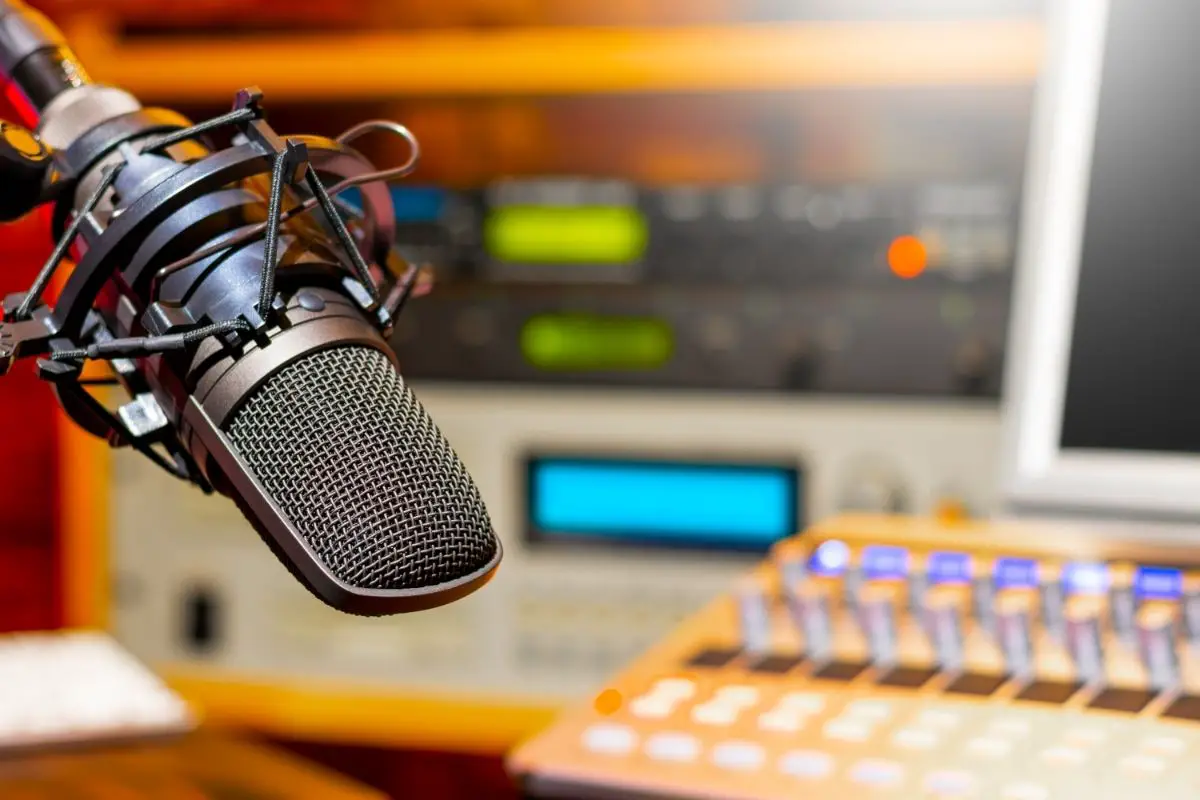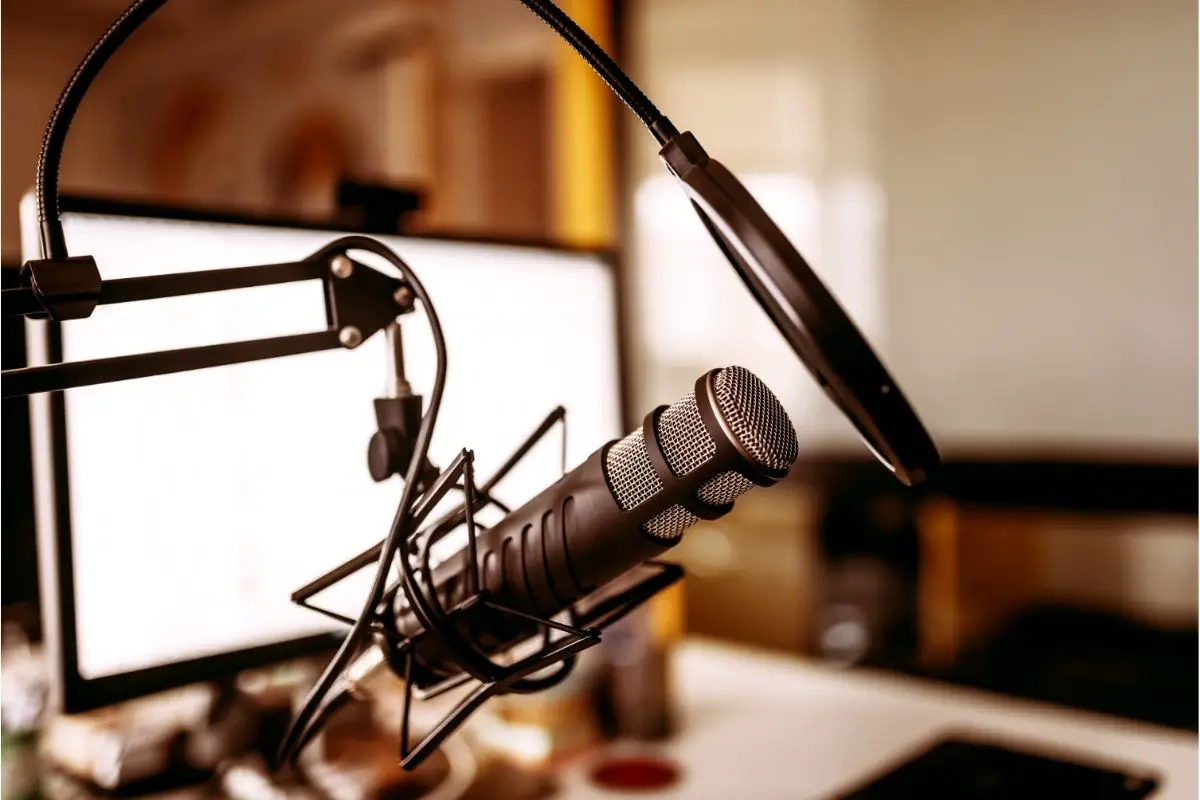If you’re planning on making an awesome podcast, you’ll need to grab a good microphone to record with!
A good mic can make or break a good podcast, so it’s crucial to pick the correct one.

The only problem is that there are so many different microphone manufacturers and models out there that it can be nearly impossible to pick just one to use!
How are you possibly supposed to find the best option when there are so many to choose from?
One of the biggest names in microphone manufacturing is the company Blue, which produces out-of-this-world microphones that put many others to shame.
Two of their most popular models are the Yeti and Snowball models.
These models offer very different experiences, so deciding which one is best for you can be pretty difficult. Luckily, I’m here to help you make the right decision!
Are you on the fence about choosing either the Snowball or Yeti model? Read on below as I put the two head to head to find out which truly comes out on top.
Table of Contents
The Snowball
The Snowball prides itself on its ease of use. The model is a plug-and-play device that hooks up directly to your laptop, computer, or other recording hardware through a simple USB connection.
This means that you do not have to be a gifted genius in sound engineering to get going.
Set the microphone up, plug it into your device, and you are ready to get recording!
You also don’t need to use any specific recording software with the mic, so you don’t need to install clunky drivers!
And the Snowball is true to its name. It features a stunning round design that looks simultaneously classical and effortlessly modern.
The snowball itself can be fully detached from the tripod and attached to all manner of tripod stands so that you can record in different environments or position the microphone in specific ways for your comfort as you record.
The round shape of the Snowball also means that it can record better than many microphones on the market.
The Snowball has three distinct recording modes: Cardioid, Omni, and Cardioid With -10dB pad.
The Cardioid recording option is designed to only pick up sound coming directly into the front of the unit.
This is the perfect option for recording podcasts, especially if you use multiple microphones to host a chat podcast or host a solo podcast.
The Cardioid option ensures that unwanted noises don’t leak in and pollute your perfect recordings.
The Omni recording option allows for sound from every angle to be picked up by the microphone.
This can be great if you do a guest podcast, but you don’t yet have the budget for multiple microphones.
Set the microphone up in the middle of a table, and it will easily pick up everyone around it.
This, of course, means that a little more unwanted noise can seep through, but not enough to cause any trouble.
The extra Cardioid option allows you to add a -10 decibel pad that attaches to the back of the unit.
This allows you to record very loud inputs without the audio clipping. It is done by reducing the mic sensitivity by around 10 decibels.
The Yeti
Similarly, the Yeti is also perfect for anyone who wants to record without wrestling around with any clunky install processes or microphone setups.
The microphone plugs directly into your device via a USB connection, and from there, you can get started on bringing your podcast to life.
Unlike Snowball, the Yeti does not feature a spherical design and instead features a more cylindrical design.
This means that it has a slightly more traditional look than you might expect from a microphone.
The microphone itself is made up of sturdy and block-colored metal that looks simply beautiful when placed on a desk and especially when in use.
The metal frame of the microphone is durable and easy to adjust so that you can easily angle it in any way that you need.
You can remove the microphone from its basic stand to attach it to a microphone arm to easily suspend it from above to clear out space and record more!
However, even though the Yeti does not feature a spherical design, it can still record audio from just about any direction!
What sets the Yeti apart from the Snowball is its many different recording modes that allow you to achieve very different results so that you can retain perfect control over the recording process.
The standard Cardioid mode is here so that you can record your voice alone without inputs from behind the microphone or anywhere else accidentally leaking in.
One of the best recording modes available in the Yeti is the Stereo mode.
Stereo mode is a little closer to the omnidirectional mode, except it significantly narrows down the range at which it will pick up sound.
Thus only things that are close to the microphone will be picked up.
This makes it perfect for recording slightly more hushed tones, perfect for horror podcasts where the atmosphere is truly king.
This is achieved by reducing the input levels to make quieter tones more easily picked up.
The Yeti also features omnidirectional recording, so if you are recording a busier podcast with multiple guests, everyone involved can surround the microphone and get to recording.
The microphone will be able to pick up all guests accurately and ensure that they are all leveled out so that no one guest sounds much louder than another.
What further sets the Yeti apart from the Snowball is the option to access Bidirectional recording.
This allows you to isolate the recording to just two sides of the microphone so that two people can record their voices without anything else being picked up.
This is perfect for anyone out there who is looking to record an interview podcast!
What Are The Differences Between The Yeti And The Snowball?
Now that we’ve taken a good look at both microphones, why don’t we also look at some of the significant differences?
Price
One of the most significant distinctions between these two microphones is the price. The Snowball is significantly more affordable than the Yeti.
This does not mean that it is lacking in any way for high-quality recording capabilities.
If you want to spend more and go for the Yeti, you should do so if you wish to access more recording modes, such as bidirectional or stereo.
These extra recording modes make it much easier to record specific types of podcast content, which allows you to improve your podcasting game exponentially.
However, the Snowball will be more than adequate if you only need access to a few recording modes, such as the cardioid and omnidirectional modes.
It will allow you to perfectly record the sound you want without breaking the bank!
Sound Quality
Both microphones offer an incredible studio-level sound that makes your podcast stand out. However, they do differ slightly in a few ways.
The Yeti is far less vulnerable to allowing sounds to seep through in omnidirectional recording mode.
On the other hand, the Snowball does allow small amounts of noise to escape into the recordings.
This can be annoying for some but provided the room you are recording in is adequately soundproofed, then there should be minimal issue.
The Yeti also has far richer sound in all modes than the Snowball.
However, I must stress that even though the Yeti microphone does technically sound more smooth, this in no way implies that the Snowball is a bad microphone.
The Snowball can still record awe-inspiring sound that will make your podcast sound ten times more professional than many other shows on the internet.
So, though the Yeti comes out on top in terms of sheer audio fidelity, the difference is still very marginal.
You should decide whether you need that slightly better sound quality for such a price!
Microphone Size
This is another area in which the two microphones differ. Of course, the Snowball and Yeti have very different designs, with one being more spherical and the other being more cylindrical.
The difference in size between the two is quite pronounced. Thanks to its shape, the Yeti is significantly taller, which takes up slightly more space on the desk or within the recording set-up.

However, this is made up for thanks to the sturdy frame for the microphone, which allows it to stand up perfectly at just about any angle you need.
The Snowball is slightly wider but has a more short and stout appearance.
This means that it can more easily record across a more considerable distance and makes it easier to pick up sound from a group of people surrounding the microphone.
The snowball can also be removed from the tripod, making it easier to stow away between uses. This is perfect if your podcast recording space is also used for other functions.
It is handy if you are recording at home! The Yeti is also easy to store as it has a very narrow design, so it can discreetly be stored away on a shelf without taking up space.
Blue Snowball Vs. Yeti: Which Is Best?
So, now it’s time for the big question we’ve all been waiting for. Which of these two microphones is the best?
This is a tricky question to answer, as many mitigating factors can affect the choice.
If you are looking for a microphone with a larger bevy of features but at a higher price, then the Yeti is easily the best option.
The Yeti offers more recording modes, has greater fidelity, and is a much sturdier unit.
However, these fantastic benefits mean that the unit also has a sizable price tag that may be very off-putting to those newer to buying microphones.
If you do not want to spend too much or do not need access to too many features, you should aim to purchase the Snowball model.
Though it does not have as many recording modes or as clear fidelity as the Yeti, it still offers incredible sound quality and efficiency that puts it above many other microphones, especially when it comes to podcasting.
The Snowball is great if you are looking for a microphone that will allow multiple hosts to record without anyone being louder than anyone else.
The spherical shape of the snowball allows it to be used as a group microphone easily. It is a fantastic microphone that you should try out.
The Snowball also comes at a much lower price, so if you are newer to recording podcasts and want to start running a podcast with multiple hosts or multiple guests, then the Snowball is easily the perfect model for you.
Overall, I would have to give the edge to the Yeti as the best of the two.
It features greater fidelity, and it has many more recording options that are perfect for anyone wanting to experiment in the podcasting arena.
This may come at a higher price, but considering just how significant those extra features are, it is a no-brainer.
However, if you need a basic microphone, the Snowball is more than adequate and can help you record a truly perfect podcast.
